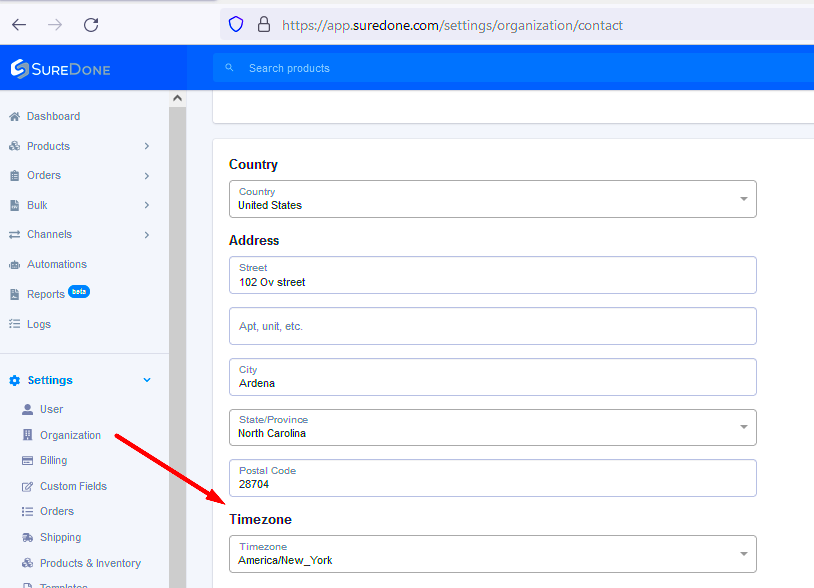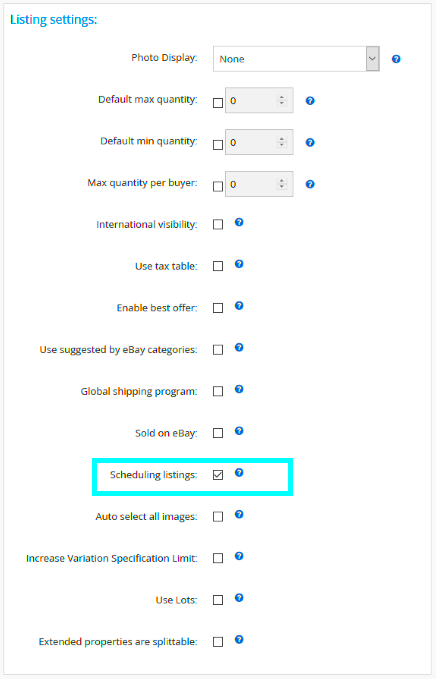Introduction: The Art of Timing Your eBay Listings
Imagine this: you’ve just got a beautiful hand-crafted USAn saree, and you're eager to sell it on
eBay. You take stunning photos, write a captivating description, and hit “List.” But then you wonder, “When is the best time for my listing to shine?” Timing, my friend, is everything. Just like how the right time to have chai can make all the difference in your day, listing your item at the right time can make or break your
eBay sales. In this post, we’ll explore how to time your
Understanding eBay's Listing Time Options
 eBay
eBay offers a variety of listing options that can help you find the right fit for your sales strategy. It’s like choosing the perfect masala for your curry—each option has its unique flavor. Here’s a breakdown:
- Start Time: You can choose to start your listing immediately or set a future start time. If you’re selling a festive item, like Diwali decorations, consider setting your start time to coincide with the lead-up to the festival.
- Duration: eBay lets you choose between 1, 3, 5, 7, or 10 days. Longer durations might be beneficial for high-value items, while shorter ones could be great for quick sales.
- Buy It Now vs. Auction: Decide whether you want to set a fixed price or let the bidding war begin. Auctions can be thrilling, especially if you’re selling something unique like a vintage Bollywood poster.
Understanding these options can be like having a map for a treasure hunt. Knowing the best route to take ensures you don’t end up lost or empty-handed.
Choosing the Best Time to List Your Items

Choosing the right time to list your items is more of an art than a science. Think of it as planning a family gathering; you want everyone to be available and excited. Here are some tips to get your timing just right:
- Know Your Audience: If you're selling something that appeals to students, such as textbooks or gadgets, listing during the evening hours when they’re likely to browse eBay after classes might work best.
- Consider Time Zones: eBay is a global marketplace. If you’re aiming for an international audience, list your items to go live during peak times in your target markets.
- Day of the Week: Weekends often see higher traffic as people have more leisure time. Listing on a Friday or Saturday could give your items a boost.
- Special Events: Align your listings with upcoming events or holidays. For instance, listing decorations or gifts a few weeks before a major festival can be a great strategy.
Timing your listings is about being strategic and a bit intuitive. Just as you’d time your shopping trips or family meals to perfection, do the same for your
eBay listings to maximize their potential.
How to Set a Listing Schedule: A Step-by-Step Guide
Setting a listing schedule on
eBay is like planning a wedding; you need to get every detail just right for it to be a success. When I first started selling my grandmother’s vintage jewelry, I was overwhelmed by the process. But trust me, once you get the hang of it, it's quite straightforward. Here’s a step-by-step guide to help you set your listing schedule:
- Log In to Your eBay Account: Start by logging into your eBay account. Navigate to the “Sell” tab to begin the listing process.
- Create Your Listing: Fill in all the details about your item—photos, description, price, and shipping options. Make sure everything is accurate and appealing.
- Select the “Schedule” Option: Instead of choosing “List,” look for the “Schedule” option. This will allow you to set a future date and time for your listing to go live.
- Choose Your Date and Time: Pick a date and time that aligns with your strategy. Consider peak shopping hours and your target audience’s time zone.
- Review and Confirm: Double-check all your details. Once you’re satisfied, confirm the schedule. eBay will automatically handle the rest, launching your listing at the chosen time.
Setting up your schedule correctly can make a huge difference, just like arranging a perfect family dinner where every dish is served at the right time. Take your time and plan it well.
Utilizing eBay's Scheduling Tools Effectively
eBay offers some handy tools that can make scheduling a breeze, much like having a good set of kitchen gadgets for cooking. Let’s dive into how you can use these tools to your advantage:
- eBay’s Bulk Listing Tool: If you have multiple items to list, use eBay’s bulk listing tool. It allows you to schedule listings in bulk, saving you time and effort. You can set various start times for different items, making it easier to manage your inventory.
- Automated Scheduling: eBay’s automated scheduling feature lets you set listings to start at specific times. This tool is especially useful if you want to stagger your listings to keep them active and visible over time.
- eBay Seller Hub: Use the Seller Hub’s insights to track when your listings are most successful. This data can help you adjust your schedule for maximum impact. If you notice that sales spike in the evenings, you can schedule more listings during those times.
- Mobile App Features: eBay’s mobile app allows you to manage and schedule your listings on the go. If you’re always on the move, this feature can help you keep track of your listings without being tied to a computer.
Think of these tools as your digital assistants. They help you stay organized and ensure that your listings get the attention they deserve. Embrace them, and you’ll find managing your eBay store much smoother.
Common Mistakes to Avoid When Scheduling Listings
Ah, the mistakes we make—sometimes they feel like they’re part of the learning curve. When I first started scheduling my eBay listings, I made a few blunders that taught me valuable lessons. Here’s a guide to avoid common pitfalls:
- Ignoring Time Zones: Failing to consider time zones can be a huge misstep. If you’re targeting international buyers, make sure your listing times align with their peak shopping hours. Always double-check time zone settings before finalizing your schedule.
- Overlooking Peak Times: Listing items during off-peak hours can lead to fewer views. Research and choose times when buyers are most active, like evenings or weekends. Avoid scheduling listings late at night or during working hours unless targeting specific demographics.
- Not Monitoring Listing Performance: Setting a schedule and forgetting about it isn’t enough. Keep an eye on how your listings perform. If you notice trends or patterns, adjust your scheduling accordingly. Regularly check your eBay Seller Hub for insights.
- Setting Unrealistic Timings: Avoid scheduling listings for unrealistic times, like during major holidays when buyers might be distracted or away. Align your listing times with your target audience’s availability.
- Missing Out on Mobile Scheduling: Don’t neglect the convenience of mobile scheduling. If you’re on the go, use eBay’s app to make quick adjustments or schedule listings. This flexibility can help you stay ahead of the game.
Learning from these common mistakes can save you time, effort, and even money. Just like cooking a new recipe, sometimes it takes a few tries to get it just right. Keep refining your approach, and you’ll master the art of scheduling in no time.
Real-Life Success Stories: How Timing Made a Difference
Let me share a little tale from my own eBay journey. A few years ago, I decided to sell a collection of traditional USAn textiles. I meticulously prepared my listings but wasn’t sure about the timing. After some research, I decided to schedule the listings to go live just before Diwali. What happened next was incredible! My items started receiving bids almost immediately, and by the end of the festival, I had sold almost everything. Timing truly was the secret ingredient.Here are a few more stories from other sellers who’ve seen the magic of perfect timing:
- Neha’s Vintage Jewelry: Neha, an avid collector, scheduled her vintage jewelry listings to go live during the peak wedding season. The result? Her sales skyrocketed as buyers were actively looking for unique pieces for their wedding celebrations.
- Raj’s Electronics Sale: Raj, who sells electronics, found that listing his items just before major tech events or product launches brought in a lot of traffic. His strategic timing meant his listings were seen by buyers eager for the latest gadgets.
- Sita’s Handcrafted Art: Sita, an artist, scheduled her art listings to coincide with art fairs and exhibitions. This alignment helped her attract art enthusiasts who were already in the buying mood.
These stories illustrate how timing can significantly impact sales. Just as you wouldn’t plan a wedding on a weekday, don’t schedule your listings without considering the optimal time for your audience.
Maximizing Your Listing's Visibility and Success
Maximizing your listing’s visibility is akin to making sure your special dish stands out at a family gathering. You want everyone to notice it! Here are some strategies to help your eBay listings catch the right eyes:
- Craft an Eye-Catching Title: Your title is like the aroma that draws people in. Make it descriptive and include relevant keywords. For example, instead of “Beautiful Saree,” try “Handwoven Silk Saree with Traditional Zari Work - Perfect for Weddings.”
- High-Quality Photos: Great photos are essential. Just as you wouldn’t serve a dish without garnishing, don’t list an item without clear, detailed images. Use natural light and different angles to showcase your product’s features.
- Detailed Descriptions: Provide thorough descriptions that answer potential buyers' questions. Include size, color, material, and any unique features. A well-detailed description helps buyers make informed decisions.
- Competitive Pricing: Research similar items and price your listing competitively. If you’re unsure, eBay’s “Completed Listings” feature can help you see what similar items sold for.
- Promotions and Discounts: Offering promotions or discounts can attract more buyers. eBay allows you to create special offers, which can be particularly effective during high-traffic periods.
- Optimizing for Search: Use relevant keywords in your title and description to improve your listing’s visibility in search results. Think about what terms buyers might use when searching for your item.
Just as you would carefully prepare a meal to impress your guests, take time to optimize your listings. It’s all about making your item stand out and appealing to potential buyers.
FAQ
Q: What is the best time to list items on eBay?
A: The best time to list items can vary based on your target audience. Generally, evenings and weekends are ideal as more people are browsing during these times. If you’re targeting international buyers, consider time zones and schedule your listings accordingly.
Q: How can I schedule a listing on eBay?
A: To schedule a listing, create your item listing as usual, then select the “Schedule” option instead of “List.” Choose the desired start time and date. eBay will automatically list your item at the scheduled time.
Q: Can I edit a scheduled listing?
A: Yes, you can edit a scheduled listing. Go to your “Seller Hub” or “My eBay,” find the scheduled listing, and make any necessary changes before it goes live.
Q: What are some common mistakes to avoid when scheduling listings?
A: Common mistakes include ignoring time zones, scheduling during off-peak hours, not monitoring performance, and setting unrealistic timings. Always check your scheduling settings and review performance data to adjust as needed.
Q: How can I use eBay’s scheduling tools effectively?
A: Utilize eBay’s bulk listing tool for multiple items, leverage automated scheduling to set listings for optimal times, and use the Seller Hub’s insights to guide your timing decisions. The mobile app can also help you manage schedules on the go.
Conclusion: Mastering the Timing for eBay Success
Timing, my dear friend, is like the secret spice in a family recipe. From my own experience selling heirloom pieces, I’ve learned that the right timing can transform a simple listing into a bestseller. Just like the effort you put into planning a festive feast, investing time in scheduling your eBay listings can yield wonderful results.Think of timing as an art form. It’s not just about when you list your items but also about understanding your audience’s habits. Is it during the hustle and bustle of the festival season or the quiet of a Sunday evening? By aligning your listings with these moments, you’ll increase your chances of catching the eye of potential buyers.Remember, the tools and strategies discussed can guide you, but it’s your intuition and adaptability that will make the real difference. Keep an eye on your performance, learn from each listing, and adjust your timing as needed. Just as in cooking, a dash of creativity and a pinch of patience will help you master the timing for eBay success.So, roll up your sleeves, take charge of your listing schedule, and watch your eBay sales thrive like a well-loved recipe in a bustling kitchen. Happy selling!
 eBay offers a variety of listing options that can help you find the right fit for your sales strategy. It’s like choosing the perfect masala for your curry—each option has its unique flavor. Here’s a breakdown:
eBay offers a variety of listing options that can help you find the right fit for your sales strategy. It’s like choosing the perfect masala for your curry—each option has its unique flavor. Here’s a breakdown: Choosing the right time to list your items is more of an art than a science. Think of it as planning a family gathering; you want everyone to be available and excited. Here are some tips to get your timing just right:
Choosing the right time to list your items is more of an art than a science. Think of it as planning a family gathering; you want everyone to be available and excited. Here are some tips to get your timing just right:
 admin
admin








